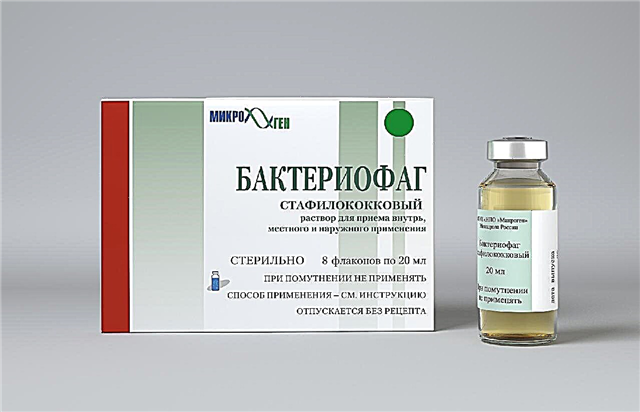Diathesis, allergies, hypersensitivity - what is it, what is the difference, how do they manifest themselves and where do they come from? Why do some kids calmly eat chocolate cake when they are a year and a half, while others get covered with "claws" from a single candy and itch? Today, scientists associate this response of the body with the specificity of the immune system and intestinal function. In any case, a hypoallergenic diet for a child with allergies remains the most effective remedy. Foods that cause overreaction are excluded from the diet.

Weak diathesis in infants
Etiology of food allergy
Allergy itself is a hypertrophied response of the immune system to some external, sometimes internal stimulus. At the same time, the amount of immunoglobulin IgE in the blood increases sharply, which is responsible for inflammation and initially serves to combat helminths in the intestines.
In children under 5 years of age, diathesis is more common. Its cause is the inability of the intestine to absorb certain substances, which causes an allergic-type reaction. Unlike allergies, diathesis is considered an age-related phenomenon and usually goes away on its own.
Types of allergic reactions to food
Doctors do not have a single opinion, but the majority is inclined to believe that it is worth distinguishing between an allergy itself and an allergic reaction (intolerance and diathesis).
Diathesis
In newborns, diathesis is usually diagnosed. It is caused by "heavy" foods and substances that come with mother's milk. There are frequent cases when external allergens cause diathesis: molecules of household chemicals floating in the air after cleaning, particles of detergent on the washed laundry, etc.
Important information! Everything that the mother eats and drinks is passed on to the child with milk. Therefore, it is important for a nursing woman to monitor her diet.
How diathesis manifests itself:
- "Crusts" on the cheeks, under the hair, on the thighs, buttocks, arms and / or other parts of the body;
- local redness;
- separate red dots and "pimples" like urticaria, localized foci on the cheeks, buttocks, etc.;
- itching;
- less often - swelling.
How to distinguish from prickly heat
Diathetic papules are quite easy to confuse with prickly heat, a skin irritation caused by a weak immune system of the epidermis and poor regulation of sweating. The main difference is where the rash occurs. Miliaria spreads where the skin sweats more, rubs against fabric, for example, under diapers, under a diaper, in the collar zone, from where it moves to the cheeks. The best prevention is air baths, contrast douches. The papules that have already arisen are not necessary, but it is permissible to wipe with a weak decoction of chamomile, string, and other soothing herbs.

It can be seen that the hearth of prickly heat is located in the collar zone
Protein allergy
Quite often, children under 1 year old are allergic to cow's milk (CMPA), more precisely, to the protein in its composition. It manifests itself as a food allergy (swelling, redness, rash), as well as vomiting, diarrhea, sometimes shortness of breath, runny nose, cough.
To which protein the body is hypersensitive is determined by the test - the allergological profile. Some proteins, such as α-lactalbumin, β-casein or bovine serum albumin (BSA), are degraded at high temperatures. If the reason is in them, then in the hypoallergenic menu for the child you can include boiled beef and veal, cereals cooked in milk, and well-boiled milk. Other types of protein are resistant to heat in whole or in part, and if the body is sensitive to them, then dairy and meat products will have to be excluded.
In any case, pediatricians strongly recommend hypoallergenic food for children under one year old: exclude raw, including pasteurized cow's milk.
As a rule, after a year the ABKM passes. However, in rare cases, hypersensitivity persists.

Symptoms of a cow's milk protein allergy
Lactose intolerance
This syndrome is considered normal for most adults. Lactose is a type of sugar found in all types of milk, including breast milk. It is nutritious, helps the absorption of calcium and other important elements. Lactose intolerance is extremely rare in children under 5 years of age.
Allergy to pollen and cross-food
In babies under one year old, it is rare, but still there is a real allergy, with the release of IgE, caused by food, pollen or other allergens. Any manifestations of it, up to pulmonary edema. Sometimes it is associated with an undeveloped immune system and weakens or goes away with age.
Allergy to pollen is very often accompanied by cross-food, that is, hypersensitivity to fruits that ripen at the same time when "dangerous" plants are blooming. For example, if you are allergic to wormwood pollen, your baby cannot eat watermelon. A full list will be provided by the doctor, most likely, you will have to find out what is possible and what is not, empirically, trying a little and waiting at least 2 hours.

Quincke's edema on the eyelids
Products prohibited for up to a year
The best nutrition for newborns and babies up to 8 months is breast milk, neonatologists, pediatricians, nutritionists and neurologists never tire of repeating this. Up to 4 months, the baby does not need additional nutrition. A hypoallergenic diet for a child is established only with the introduction of various purees, juices and cereals.
If the baby is artificially fed (on infant formula), or the mother does not have enough milk, and it was not possible to increase lactation, then from 4 months it makes sense to introduce complementary foods.
It is strictly prohibited for up to a year:
- citrus fruits, kiwi and other fruits and berries with a bright taste and an abundance of essential oils,
- chocolate and cocoa,
- raw and pasteurized milk,
- any candy,
- coarse, heavy, fatty foods (dumplings, fried cutlets, pilaf, etc.),
- legumes, nuts, and brown and wild rice (foods rich in oils and inhibitors, including phytic acid).

Allergic foods
Proper nutrition for children with allergies
All fruits and vegetables up to a year should preferably be given processed. Firstly, it reduces the stress on the stomach and intestines, respectively, and the risk of diathesis. Secondly, it reduces the number of allergens and disinfects food. Until the painters cut through, all food should be mashed. After - only crushed.
Why do you need complementary foods? Puree prepares the baby's digestive system for normal food, improves peristalsis, and causes the development of microflora. Children on artificial feeding often have colic after the introduction of complementary foods. The diet, even with severe allergies in a child, should include fiber and be varied.
Important! Each new product or dish must be introduced for lunch, in the amount of half a teaspoon, before the milk / mixture. Strictly 1 product per week. This is necessary in order to be able to observe the child and his reaction to a new dish, as well as to allow the body to adapt to unusual food.
If a child does not feel well after a new product (is capricious, sleeps badly), his stomach swells, rashes, diarrhea appear, or belching intensifies, the product should be postponed for at least a month.

Examples of products causing gassing
Sample menu for an allergic child 4-6 months:
- 06:00 - GW.
- 10:00 - one-component vegetable or apple puree + dairy-free porridge.
- 14:00 - GW.
- 18:00 - apple or other boiled fruit puree, for example, pear, + GW.
- 20:00 - GW.
Vegetables - squash, carrots, pumpkin. The "softer" the taste of the vegetable, the better, but an assimilation test is required.
If you are allergic to milk
From 6 months old it is allowed to try curds, kefir, fermented baked milk and other fermented milk products with low fat content, without berries, artificial ingredients (flavors, dyes) and other "podkushchiteli". It is believed that these products are healthier and safer than boiled milk, but children may well have CMPA. If, after the first half spoonful of cottage cheese or later, when the dish has been in the diet for some time, the baby develops rashes or other signs of allergies, you need to abandon fermented milk products.
If a baby under one year old has an allergy to milk, most likely, the body will not cope with its derivatives, as well as with meat. Be sure to visit an allergist or nutritionist and find out which protein the child is allergic to. Perhaps the baby is allowed milk porridges and boiled meat, but fermented milk products are prohibited.
In addition, it is often not protein that causes allergies, but lactic acid bacteria. In this case, for the development of microflora, the menu for an allergic child includes more vegetables: mashed potatoes, steamed vegetable cutlets, cereals and soups.

Causes and frequency of BACM in babies by 1 year
Diet of a nursing mother with allergies in a child
If the child is allergic to any food and is breastfed, the mother is also prohibited from “dangerous” meals.
Sometimes there is not an allergy, but a lack of enzymes, due to which the child is not able to digest fermented milk products, multicomponent dishes, including soups. Such children are shown breastfeeding for as long as possible, up to two years. The mother's diet should be balanced, all foods should be hypoallergenic (excluding citrus fruits, chocolate, etc.), HS should be started no earlier than an hour after the mother eats. This is necessary so that the nutrients have time to be absorbed and fill the milk.
An independent baby's diet should consist of dairy-free one-component cereals, broth, boiled for 3 hours, if there is no hypersensitivity - well-cooked vegetables (one vegetable per meal). All recipes should be simple in composition, but at the same time the diet should be varied. Sweets, fermented milk, fresh fruits and berries, raw milk of cows and other animals, even goats are completely excluded.

Foods to exclude and limit if parents are allergic
What can a nursing mother
Products permitted by a nursing mother:
- All soups that do not contain legumes, cabbage, beets, canned fish. A liquid dish should be present in the diet 1-2 times a day;
- Mashed potatoes;
- Boiled meat, chicken breast, with care - boiled fish, turkey;
- Porridge, except for pea, brown or wild rice, oatmeal, if it causes relaxation, corn porridge is also undesirable;
- With care - cheese, loaf and other bakeries;
- Cottage cheese and vegetable casseroles;
- Pasta (in moderation)
- Water - at least 3 liters per day;
- Teas with fennel or dill to enhance lactation (2-3 times a day).
From 3 months you can add green apples to your menu. From 4-5 months - stewed and boiled vegetables. From 6 months - fresh cucumbers, bananas (with care).
Allergies in infants are the exception rather than the rule. Usually we are talking about diathesis and immature intestinal microflora. The first complementary feeding should be started no earlier than 4 months, gradually adding vegetables, fruits, meat, egg yolk to the baby's diet (preference should be given to quail, since chicken are more allergens), cottage cheese and other dairy products. The task is to gradually prepare the baby's gastrointestinal tract for rough "real" food. Any new meals should be introduced gradually and the reaction should be monitored carefully over several days. It is allowed to supplement the diet once a week to give the body time to adapt.



